Recent Articles
Popular Makes
Body Types
2018 BMW X6 Road Test and Review
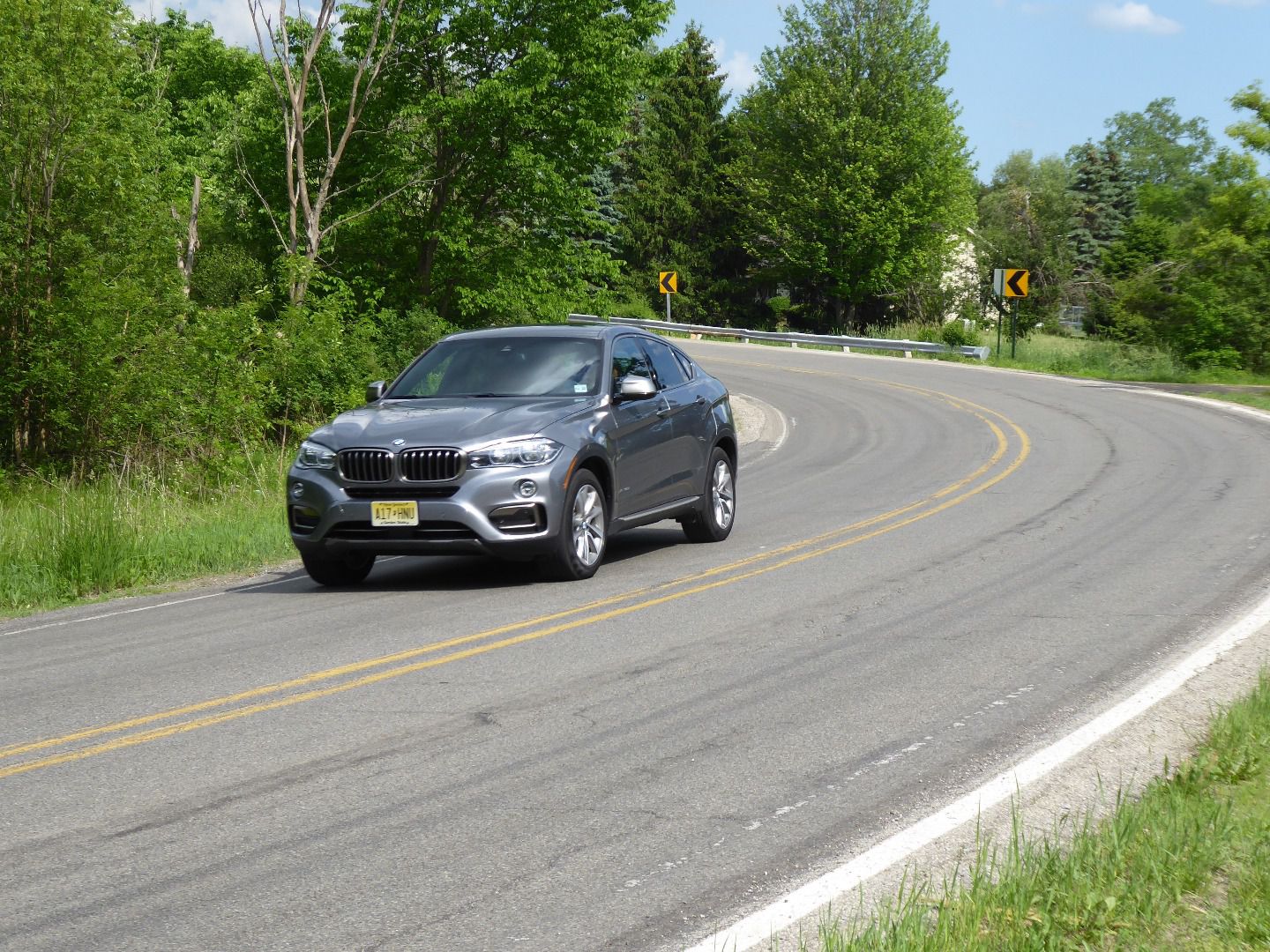
18bmwx6action2sessions ・ Photo by Ron Sessions
The BMW X6 isn’t for everybody. And that’s exactly what the Munich-based automaker had in mind when it launched the first X6 Sports Activity Coupe in 2008. Now in its second generation, the South Carolina-built X6 is designed to appeal to buyers who want the high-riding driving position and big-wheel look of an SUV blended with the sloping rear roof and shapely profile of a coupe.
Although it has attributes of all three body styles, the five-door X6 is neither a wagon, a hatchback coupe, nor an SUV. It’s something altogether different. Three models are offered for 2018: the rear-wheel drive $63,695 sDrive35i, the all-wheel drive $65,995 xDrive35i, and the all-wheel drive $78,445 xDrive50i (prices include a $995 destination charge). A 300-horsepower turbo six-cylinder powers the sDrive and xDrive35i models, while a 445-hp twin-turbo V8 is under the hood of the xDrive50i.
All Aboard
Generally speaking, BMW’s X line of sport activity vehicles increase in size with higher numerical values. That’s not the case, however, with the X6 — it offers about 25 percent less interior space than the X5. You might say, though, that the X6 has a bigger persona, a sportier look due to its fast, coupe-like roofline. So it offers the beefiness of an SUV without looking overly domesticated or, heaven forbid, practical.
Anyone who grew up lusting for and eventually owning BMW 3 Series sedans and coupes must recalibrate his or her expectations when walking up to the X6. That tall SUV look is no illusion. Unless you’re a really long-legged person, you’ll make use of the aluminum running boards (a $400 option on the xDrive35i) while getting in, and trying to step over them will only make your pants dirty. The X6’s ride height is really that tall. If you are standing at the rear of the X6, its tail lamps are at chest height—compared to waist height on a 3 Series sedan or wagon.
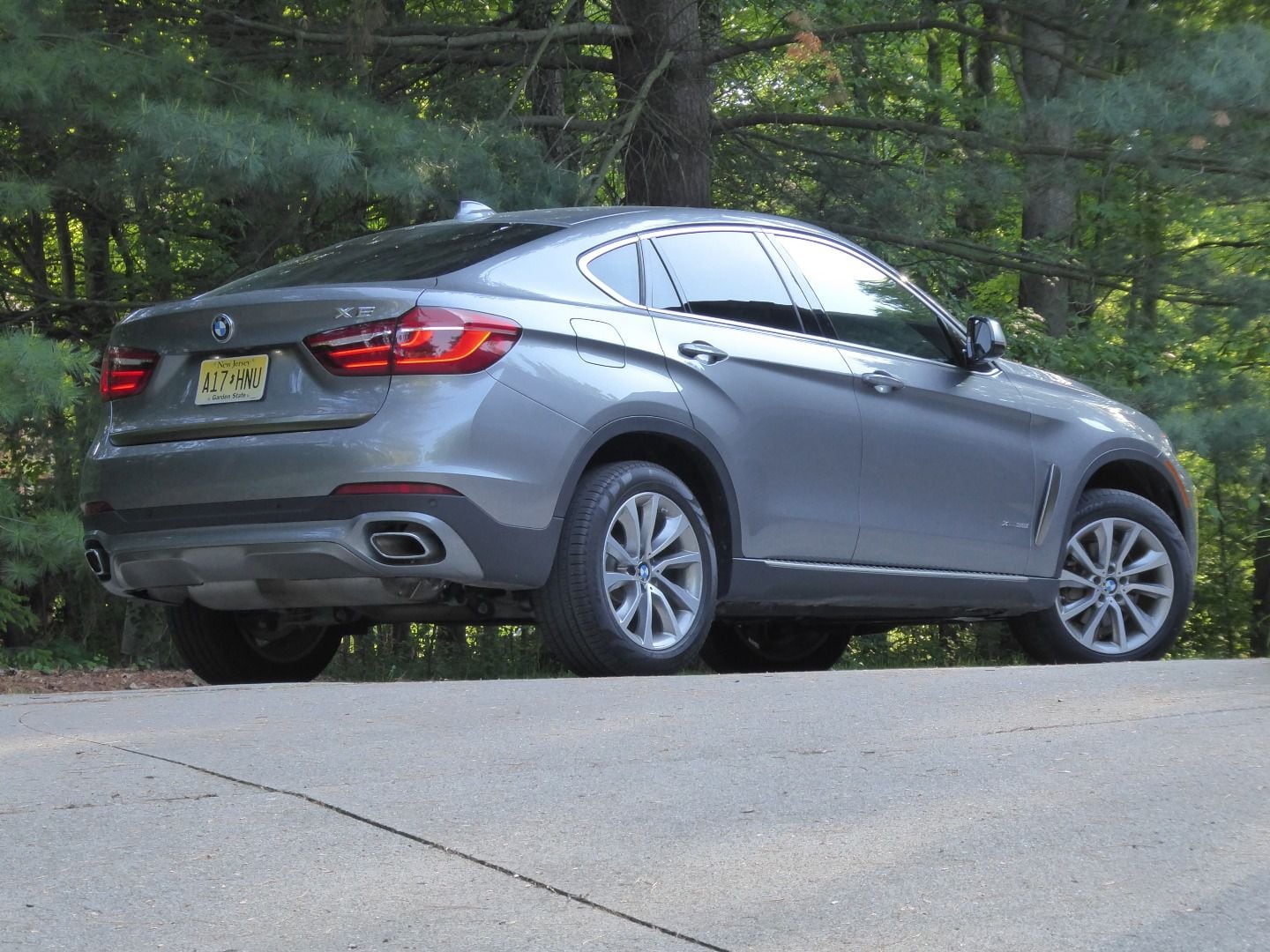
Photo by Ron Sessions
Riding Tall and Luxurious
Slide behind the wheel of an X6 and the spacious and luxurious interior rewards your efforts. Up front are generously sized heated power seats in two-tone Dakota leather with adjustable lumbar support and driver memory. Although quite supportive, the seats in six-cylinder models lean toward the comfort side of the equation. V8 versions get multi-contour front seats with more bolstering, but on both seat types, there are no hard wings, intrusive bolsters, or hot spots to spoil a long-distance drive.
BMW's iDrive 6.0 infotainment system provides a 10.2-inch high-resolution touchscreen, a touchpad controller, and eight memory buttons. Standard fare also includes Bluetooth, a Wi-Fi hotspot, HD radio, a navigation system with voice command and real-time traffic information, and a universal garage-door opener. However, options can pile on cost rapidly. Apple CarPlay compatibility is a $300 upcharge (there’s nothing yet for Android Auto users). Wireless smartphone charging is a $400 option as well. SiriusXM satellite radio costs extra on all but the xDrive50i trim. Night vision is a $2,300 option across the board. And it's hard to resist the optional surround-sound Bang & Olufsen premium audio system.
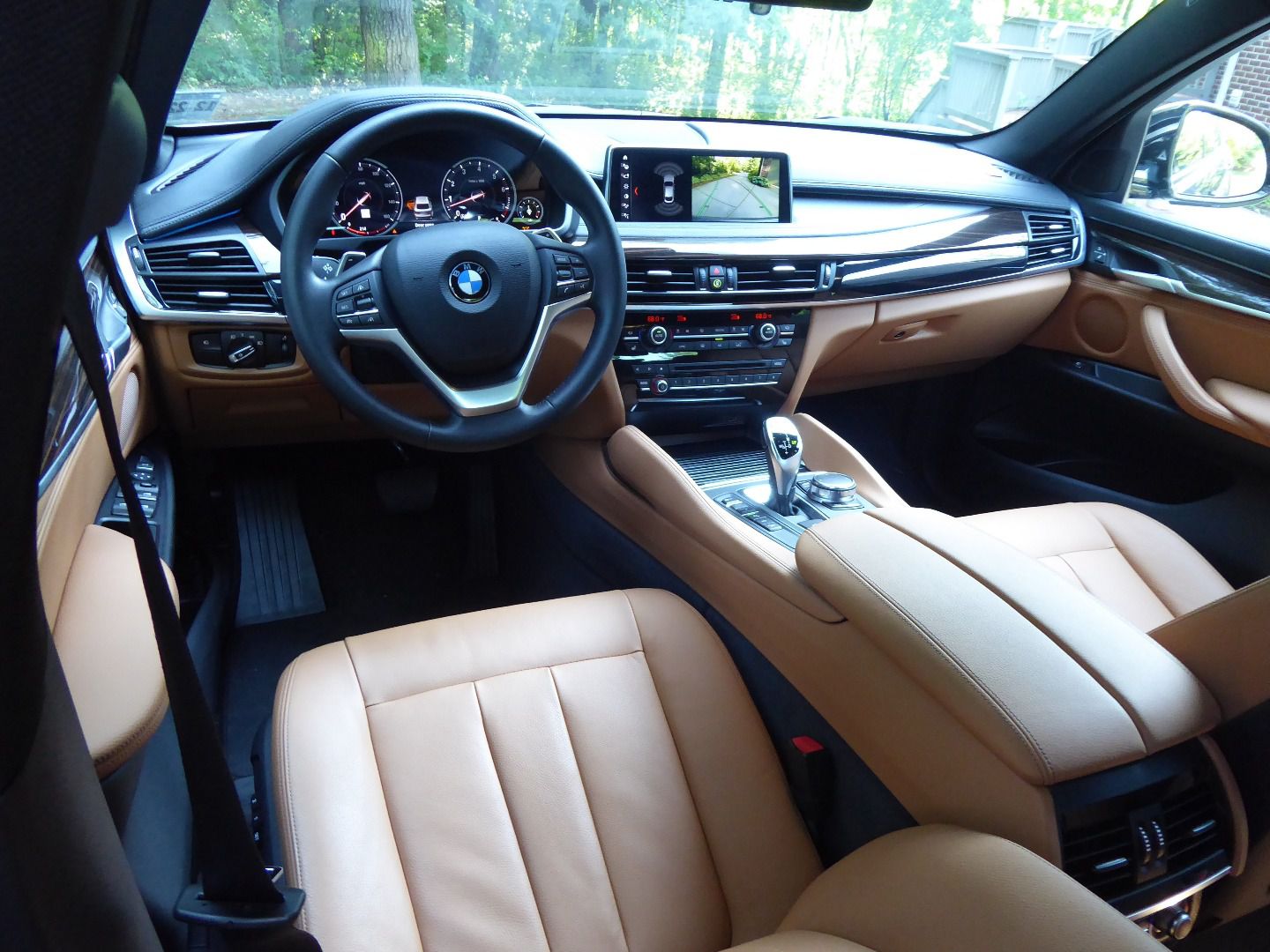
Photo by Ron Sessions
No Back Seat Blues
Despite the steeply raked roofline, the X6 offers SUV-like rear-seat usability. The seat is a 40/20/40 split folding design with a flip-down center console/armrest. While still generous, rear seat headroom and legroom are down about an inch compared to the more upright X5. With good chair height, two adults can sit comfortably back there, three if the center person is small or a close friend. Options include rear entertainment, heated rear seats, and retractable rear-door window shades.
Throughout the cabin, materials are top-notch with striped wood, brushed aluminum, and piano black trim accents, and fit and finish are excellent. A standard moonroof cheers up the place, and driver-selectable ambient lighting in blue, white, or orange along the sides of the console, doors, and dash adds a neat touch, especially at night. Interior occupants are coddled by soft-touch materials and well-padded armrests, console sides, door trim, and dashboard contact points.
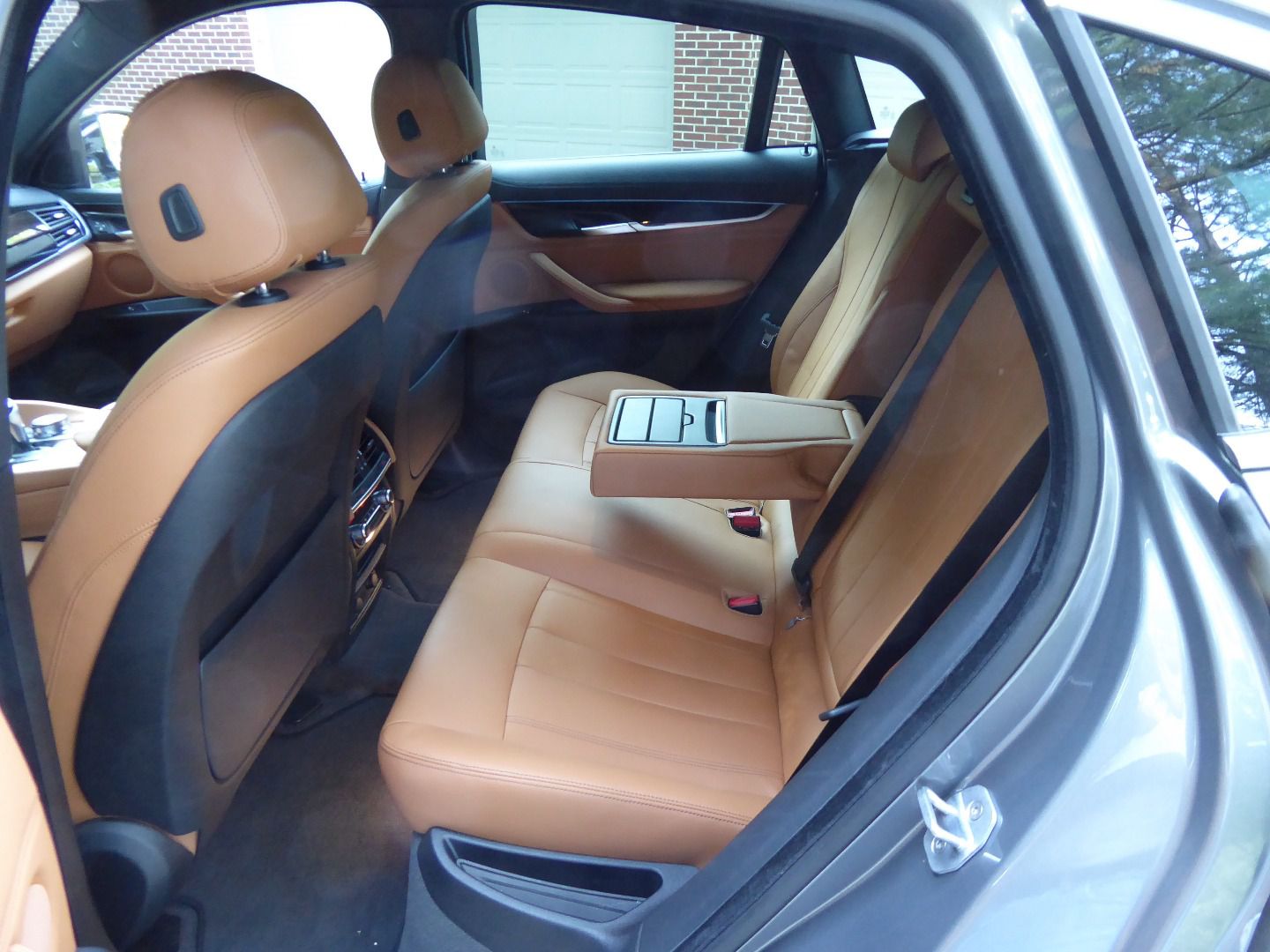
Photo by Ron Sessions
Hatching a Coupe
The liftgate at the rear of the X6’s steeply raked roof is power-operated. A hands-free feature opens and closes the liftgate with a foot wave under the rear bumper of V8 models (it's also optional on six-cylinder versions) provided you have the key fob on your person.
Cargo space is not as generous as in the equally sized X5, but the high rear beltline means the “trunk” space below the windows is an impressive 20.5 cubic feet — more than in the full-size 7-Series sedan — even with the rear seats up. Fold down the back seats and cargo space increases to 53.9 cubic feet, plenty large for any sports activities we can think of that involve a ball.
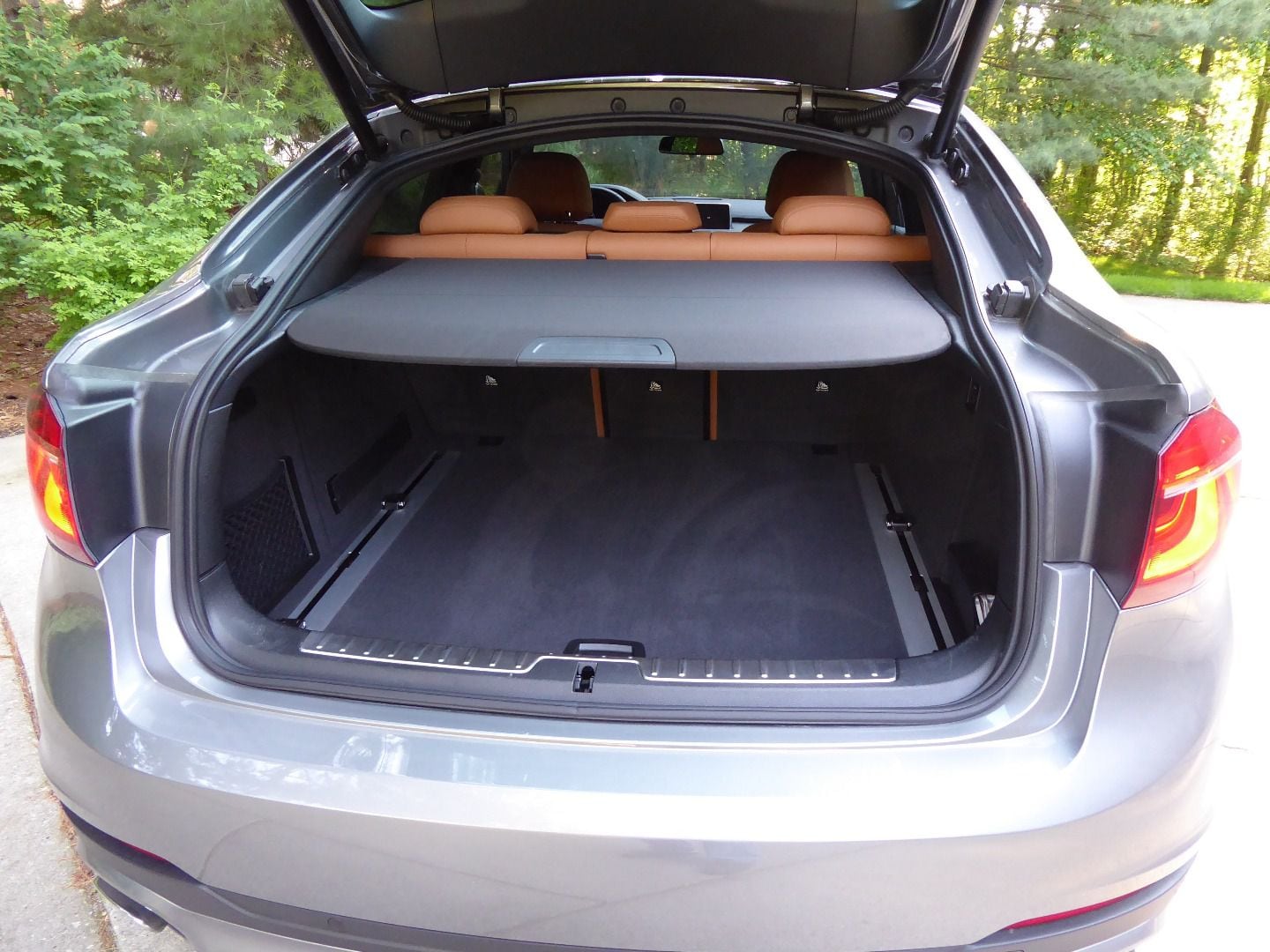
Photo by Ron Sessions
Powerhouse
Two engines are available, both teamed with a seamlessly quick-shifting ZF eight-speed automatic transmission with Steptronic manual shift control via steering wheel paddles or the shift lever gate. The 300-hp 3.0-liter twin-scroll turbo six-cylinder in the X6 35i delivers pleasing performance, accelerating to 60 mph in about 6 seconds flat while making appropriately sporty sounds from its new-for-2018 trapezoidal-shaped dual exhaust. With 300 lb-ft of torque on tap from 1200 to 5000 rpm, this very flexible engine offers good all-around response even at part-throttle. The 50i brings a 445-hp twin-turbo 4.4-liter V8 with 480 lb-ft of torque and 0-60 times under 5 seconds.
Both engines require premium fuel, and no diesel or hybrid powertrains are available. All X6s include an automatic start/stop system that shuts off the engine at idle to save fuel and automatically restarts it with a slight bump when the driver lifts a foot off the brake. The 35i is EPA-rated at 18 mpg city/24-25 mpg highway/20-21 mpg combined. The V8 drops to 15 mpg city/21 mpg highway/17 mpg combined. Engaging "Eco Pro" mode slows throttle response, delivers earlier upshifts, reduces accessory loads, and decouples the engine when coasting to save fuel.
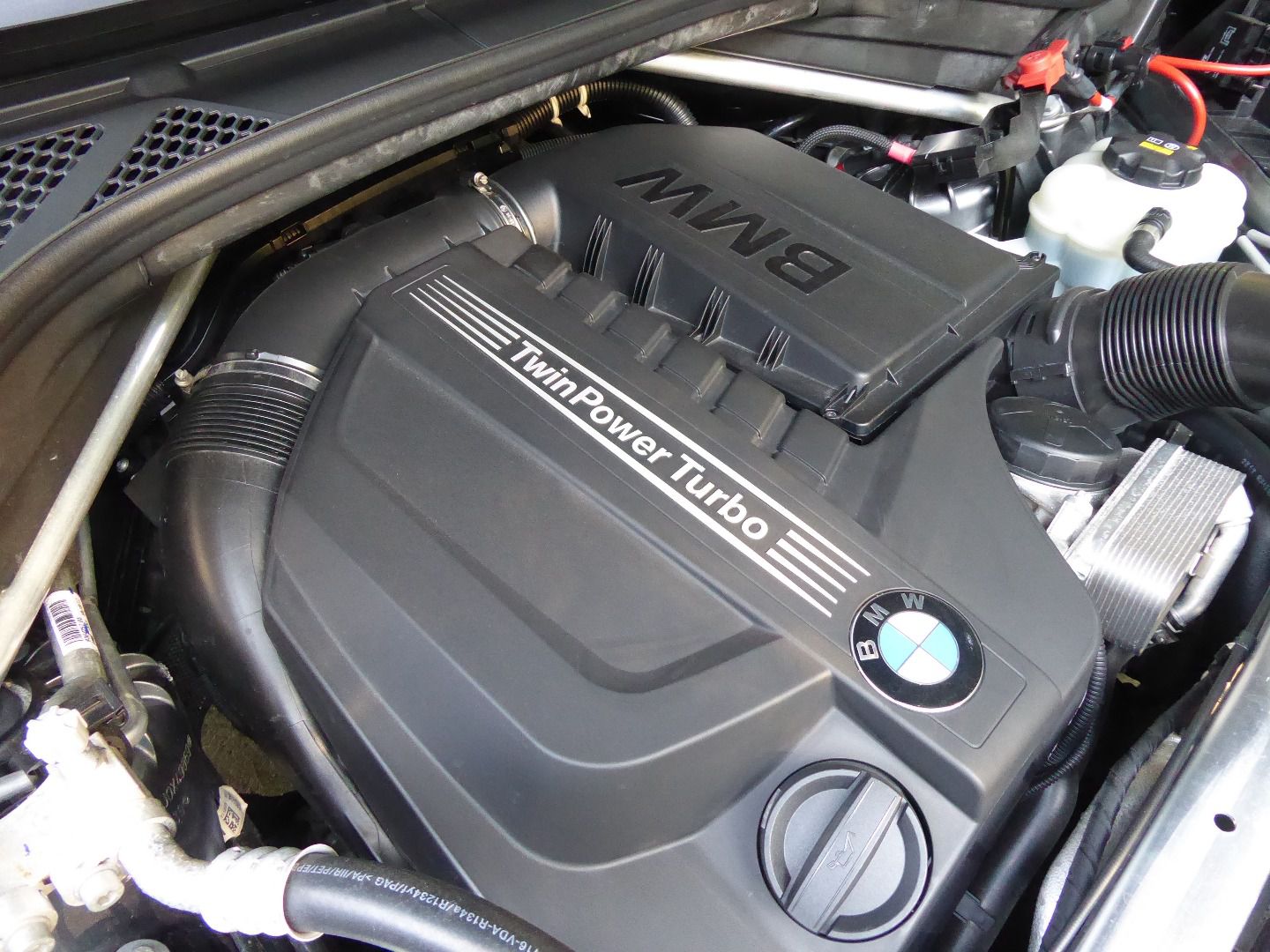
Photo by Ron Sessions
Play Action
As with all BMWs, the X6 has a stiff body structure and near-perfect 50 percent front/50 percent rear weight distribution for balanced handling. The base suspension does a fair job of controlling body motion considering the vehicle’s high center of gravity, but some drivers will find the ride more jouncy than expected, with a fair amount of head toss. The tippy feeling is reduced a bit with the $1,500 optional adaptive shocks, which adjust damping according to road inputs in real time. They include a rear air suspension that keeps the rear end up while something heavy is in the cargo hold. The $4,500 optional dynamic handling package adds an active roll stabilization feature. Both suspension options significantly increase ride stiffness for performance driving in Sport or Sport+ drive modes.
Steering is an area where the tall X6 doesn’t perform as crisply as BMW’s legendary 3 Series, requiring greater focus to place the vehicle in the lane and negotiate turns than you might first expect. Overall effort is reduced at low speeds for easier maneuverability and increased at higher speeds to aid stability. Optional active steering adjusts the ratio to vehicle speed.

Photo by Ron Sessions
xDrive Traction
BMW’s xDrive all-wheel-drive system is optional with the six-cylinder turbo engine and standard in the V8 twin-turbo trim. The system continuously adjusts the drive torque split between the front and rear wheels to maximize available traction in rain, snow, loose gravel, wet leaves, and so on.
With optional Dynamic Performance Control (part of the $4,500 dynamic handling package) torque vectoring is applied to the rear wheels to vary the power split side to side and improve steering response. Though the X6 has run-flat tires, a space-saver spare tire is a $150 option and good insurance if you hit a pothole is so deep that it takes out the tire and the wheel it’s mounted on.
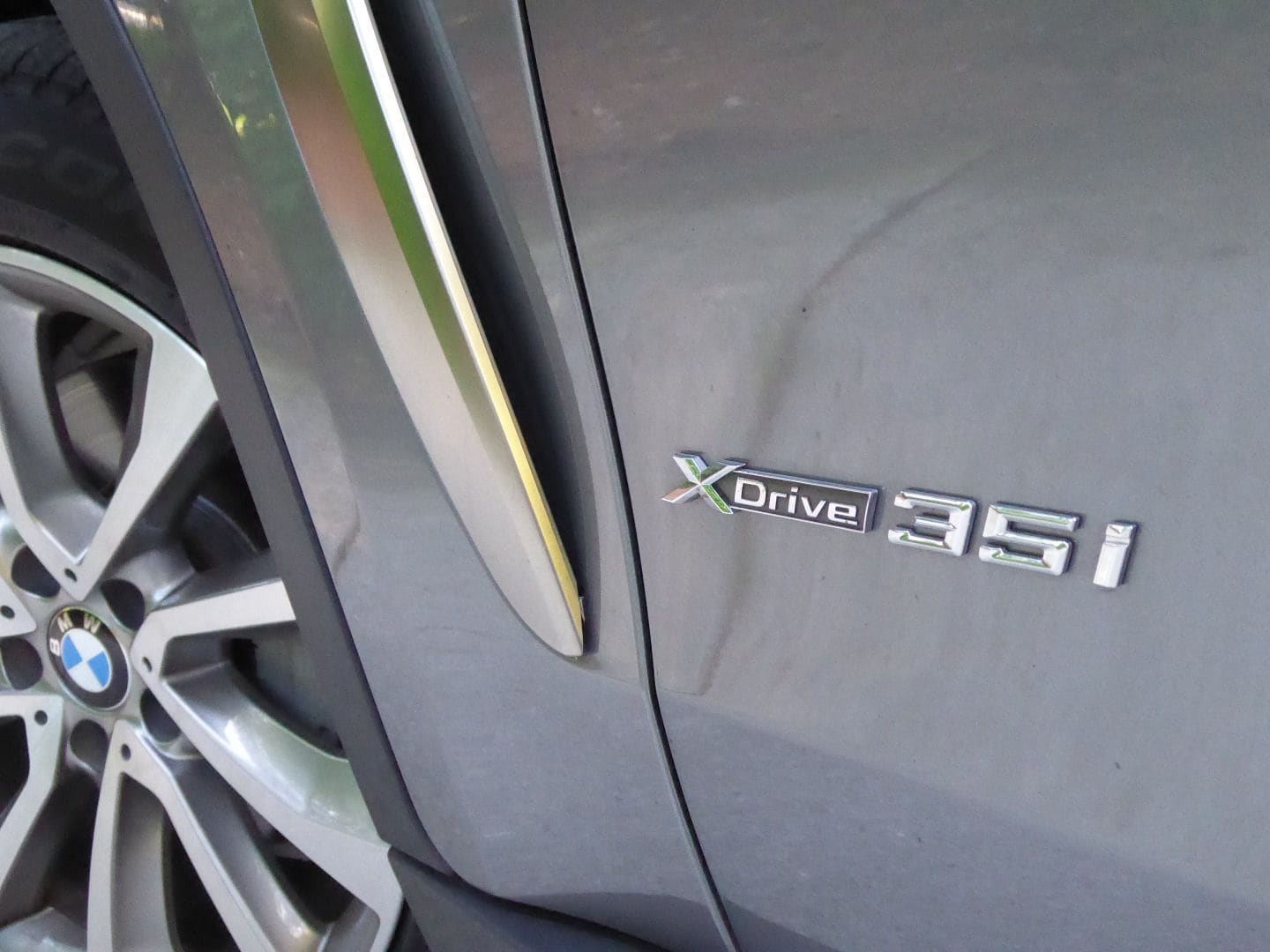
Photo by Ron Sessions
Driving Assistance and Safety
In addition to stability control and a full complement of airbags, the X6's standard safety features include a backup camera and sonar-based front and rear park distance control. But unlike the offerings from many Asian competitors, much of the more advanced features cost extra and are dispersed throughout several option packages.
For example, blind-spot monitoring and lane-keeping assistance is standard on V8 models but part of a $1,700 Driving Assistance package on six-cylinder trims. A $1,200 Advanced Driving Assistance package gains adaptive cruise control with full stop and go, and automatic emergency braking with pedestrian detection. If you want the nifty 360-degree backup camera on six-cylinder models, that’s part of the $2,550 Executive package that also adds automatic high-beam control, soft-close doors, full LED exterior lighting, a head-up display, and a parking assistant that steers the X6 into a spot while you operate the accelerator, brake, and gearshift.
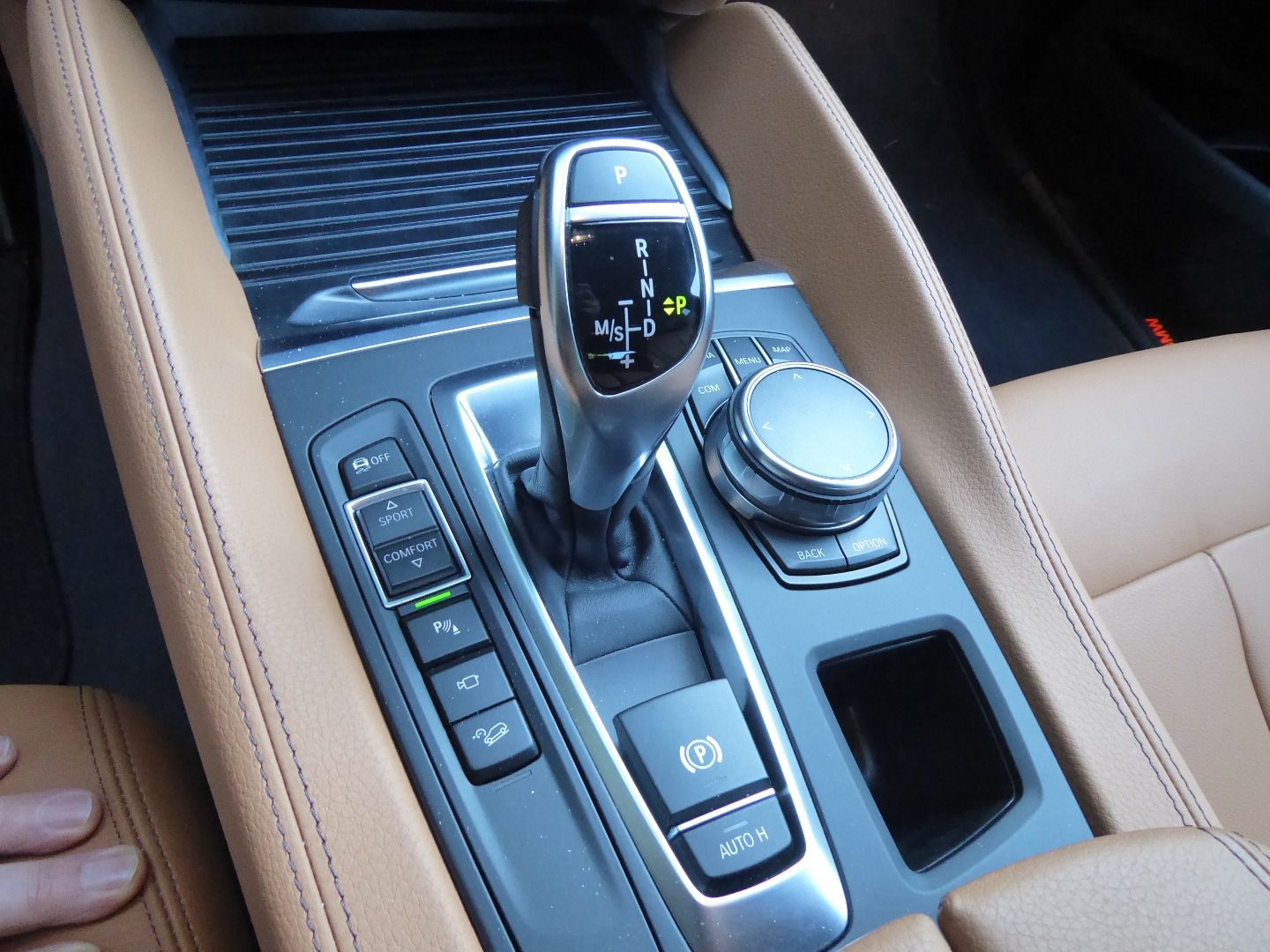
Photo by Ron Sessions
A Unique Slice
No doubt about it, the 2018 BMW X6 offers a unique experience: one part SUV, one part coupe. It’s not for everyone, which is probably why BMW sells around 10 similarly sized X5 sport activity vehicles for every single X6 sport activity coupe.
The X6 may be nowhere as nimble as a real car-based coupe, but it offers more utility in something that stands out in a sea of SUVs.
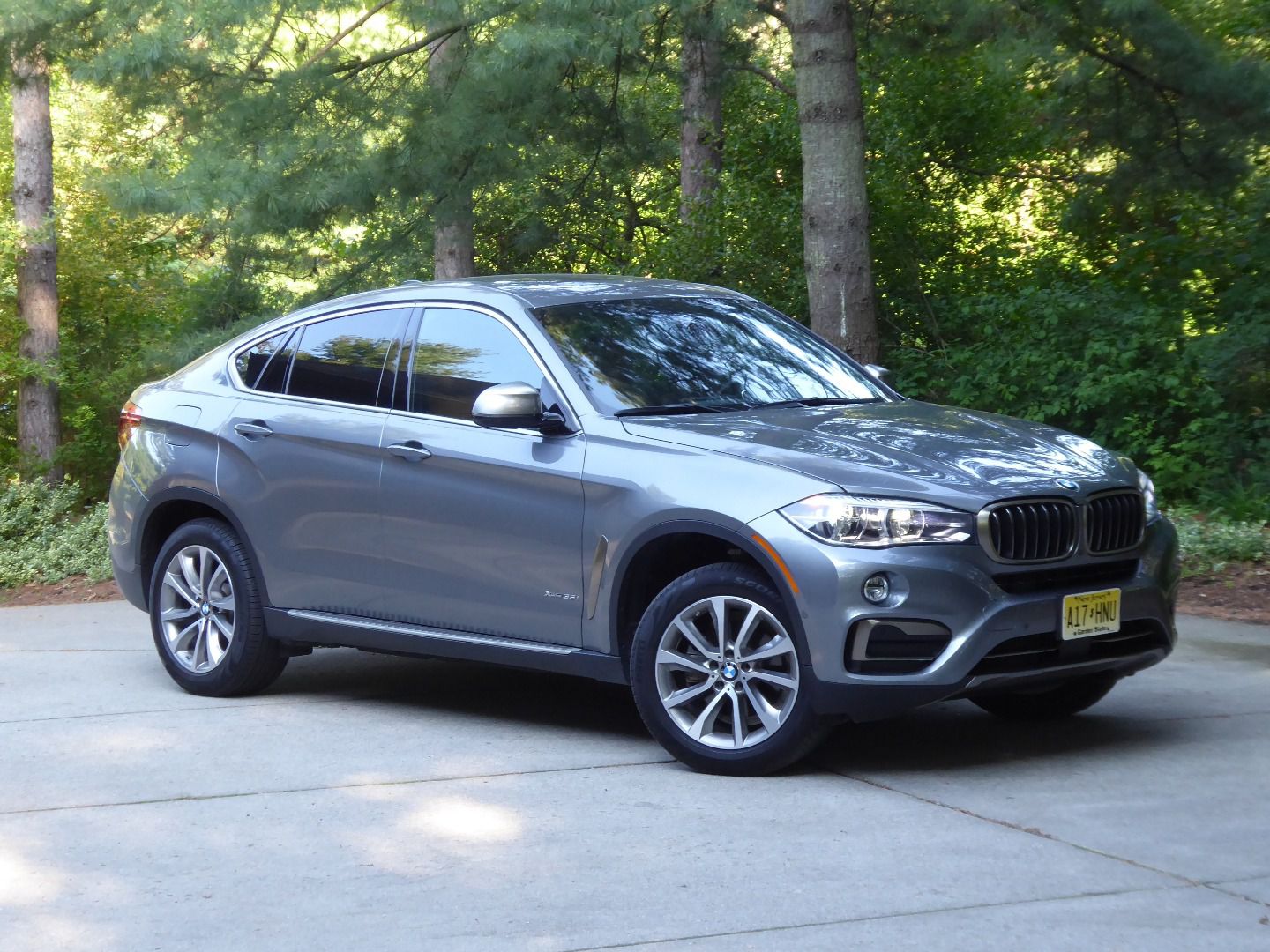
Photo by Ron Sessions